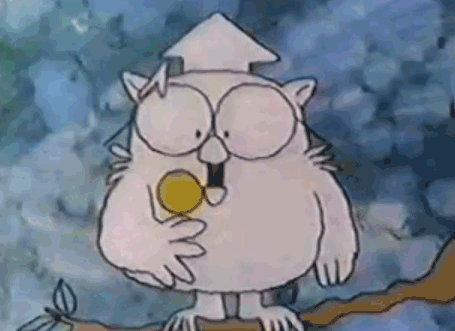WE ARE
WHAT WE MEAT
As I have established, children form bonds with the animal characters they see
in movies, television, and books and then are told to bypass these connections to eat those animals. Those children then grow up indoctrinated with the belief that is it permissible to eat some animals and not others, as seen in animal imagery every day, and as adults these notions become culturally engrained in our collective psyche. As children grow into adolescence and adulthood the texts that we see adapt with us, so that there are certain ways we perceive messages as we age. But what consistently does not change is that we use animals brought to life with human characteristics to reach people in all stages of life. There is a technical term for these figures, trade characters, and a few examples include:
California dairy’s Happy Cows;
Charlie the Starkist Tuna;
and the Tootsie Pop Owl
To be clear, the name “trade character” applies to any figure which represents a brand but here I am specifically focusing on food advertisements. In general, consumers do not stop to analyze the rhetorical techniques used in advertisements, but fast food ads are particularly interesting and worth looking at. One company who uses advertisements very effectively is Chik-fil-A: their clever ad campaign uses anthropomorphized cows to promote eating chicken instead of beef because cows apparently value their lives too much to be eaten. There are several points to explore immediately, but I will focus on the representation of the cows. In the multitude of different ads, they look like your standard black and white cows, proportionally accurate with proper bovine features, but they perform human actions such as using paintbrushes to write on billboards, standing up on two legs, holding signs, walking on tightropes, blowing on whistles, to name a few. I want to look at this one:
The two cows are working together: one is standing on top of the other holding a wet paintbrush, while the other is standing and acting as what can only be described as a look-out. They have created a dialogue between themselves and the audience, asking us to place them firmly in the “beloved family member” ad category described earlier, while intending the chicken they ostensibly painted to be delegated to the “food” category. The three dimensional, realistic, yet still human-like depiction of the cows in stark contrast to the two dimensional, child-like, clearly animalistic chicken produces a bizarre image. Both of the two are nonhuman animals, who theoretically should be on the same “team” so to speak, and are placed at odds with each other to in order to encourage some level of conscious meat eating.
This strange image sends and reinforces the same conflicting message to the consumer: don’t eat this animal because it wants to live, but this one is perfectly acceptable for consumption - and don’t forget to get it at Chik-fil-A! These ads are widely considered culturally appropriate: they are perplexingly seen as funny and endearing, rather than problematic and aggressive. We take in these images, and others, and do not stop to think of the actual implication of these popular texts. Mass consumption of popular culture regulates and facilitates the normalization of the sexist, speciesist, and dominating culture of eating meat.



